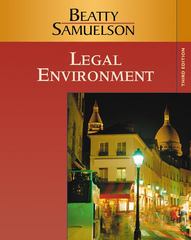Question
1. The ability of banks to create money has its source in which of the following _____? A. The 100 percent reserve requirement. B. The
1. The ability of banks to create money has its source in which of the following _____?
A. The 100 percent reserve requirement.
B. The ability of the government to mint as much currency as it wishes.
C. The banks' ability to issue currency (bank notes) of their own.
D. Fractional-reserve banking (less than 100 percent reserve requirement).
2. Which of the following items is assets of a bank _____?
A. Loans
B. Checking account deposits
C. Saving account deposits
D. Money borrowed from Federal Reserve
3. What would happen to money supply, if the Federal Reserve (Fed) raises the discount rate or the reserve requirement ____?
A. When the Fed raises the discount rate, total money supply increases.
B. When the Fed raises the reserve requirement, total money supply increases.
C. When the Fed raises the discount rate, total money supply decreases.
D. When the Fed raises the reserve requirement, total money supply is unchanged.
4. Which of the following statements is true regarding the natural unemployment rate ____?
A. It is always at zero percent.
B. It reflects unemployment when an economy is in "full employment".
C. It is decided upon by the federal government.
D. It is the amount of unemployment in the economy, adjusted for the effects of inflation.
5. Inflation will be reflected as the directly proportional change of ____?
A. Total money supply increase
B. Nominal wage growth and nominal interest rates.
C. Nominal wage growth, but not nominal interest rates
D. Banks that have market power and refuse to lend money
6. In a closed economy, income equals expenditure because of which of the following ____?
A. The influence of governments on individual markets.
B. GDP does include all expenditures.
C. GDP does not include intermediate goods in some cases.
D. The expenditure of the buyer must be equal to the income of the seller.
7. If a country has $50 million of net exports and $70 million of saving, net capital outflow and
domestic investment must be which of the following ____?
A. Net capital outflow is $50 million, and domestic investment is $70 million.
B. Net capital outflow is $50 million, and domestic investment is $20 million.
C. Net capital outflow is $120 million, and domestic investment is $70 million.
D. Net capital outflow is $120 million, and domestic investment is $50 million.
8. In an open economy, if a country has a trade surplus, which is NOT correct ____?
A. Exports > Imports.
B. Y < C + I + G
C. Saving > Investment
D. Net capital outflow > 0
9. Recall different interest rates we have talked about in this class. What is the rate of interest that the Fed Reserve pays commercial banks on their deposits with the Fed ____?
A. Federal fund rateB. Discount rate
C. Rate on reservesD. Real interest rate
10. For the classical dichotomy, which of the following is NOT influenced by changes in the quantity of money ____?
A. Nominal GDPB. Unemployment
C. Nominal interest ratesD. Hourly wages
11. Which of the following description of the natural rate of unemployment is NOT correct ___?
A. It fluctuates noticeably around short-term business cycles.
B. It reflects the whole economy gravitates toward the long run.
C. It can be measured by averaging all the unemployment rates over several years.
D. It has important implications for public policy.
12. Which one is likely to cause a rise in net foreign investment (or capital outflow) ____?
A. High inflation in a major trading partner of the US
B. A decrease in real interest rates among European nations
C. An increase in the federal government deficit
D. A reduction in the federal government deficit
13. If the nominal interest rate is 2.5 percent and the inflation rate is 3.5 percent, what is the real interest rate ____?
A. -1 percentB. 1 percent
C. 2.5 percentD. 6 percent
14. In a country, if the job separation rate is about 2.4% per quarter and job finding rate is 27.6% per quarter. Then, how much is the steady rate of unemployment in this country ____?
A. 2.4% per quarterB. 9.5% per quarter
C. 8.0% per quarterD. Unknown
15. During the 1973 energy crisis, the high oil price caused a supply shock and a recession in the United States. As a response, suppose the Federal Reserve chose monetary expansion to prevent a reduction in total output. Which of the following is correct ____?
A. The short-run aggregate supply curve shifts downward due to the higher energy prices.
B. The short-run aggregate supply curve shifts upward due to the higher energy prices.
C. After the monetary expansion, levels of prices will remain unchanged.
D. After the monetary expansion, levels of prices will be permanently lower.
Step by Step Solution
There are 3 Steps involved in it
Step: 1

Get Instant Access to Expert-Tailored Solutions
See step-by-step solutions with expert insights and AI powered tools for academic success
Step: 2

Step: 3

Ace Your Homework with AI
Get the answers you need in no time with our AI-driven, step-by-step assistance
Get Started


